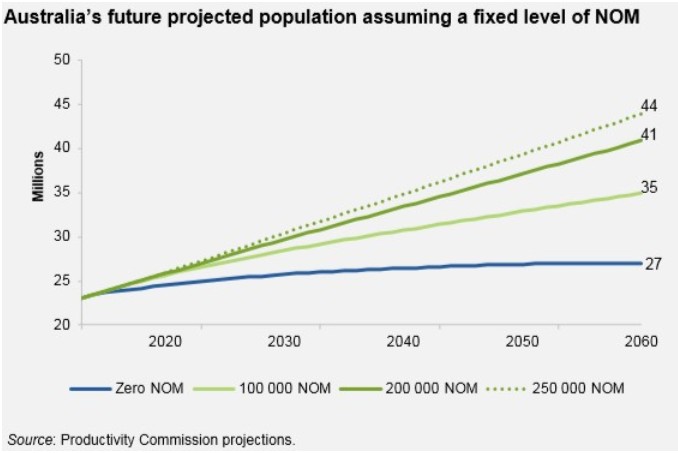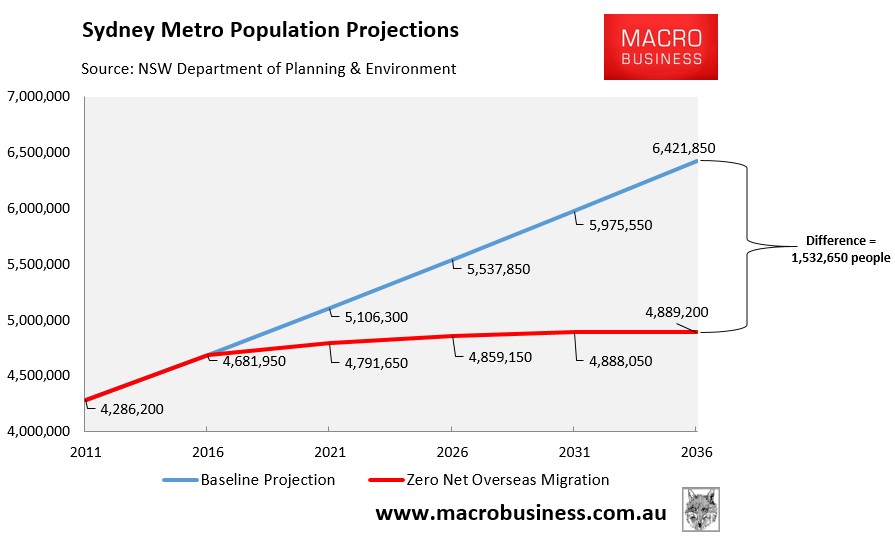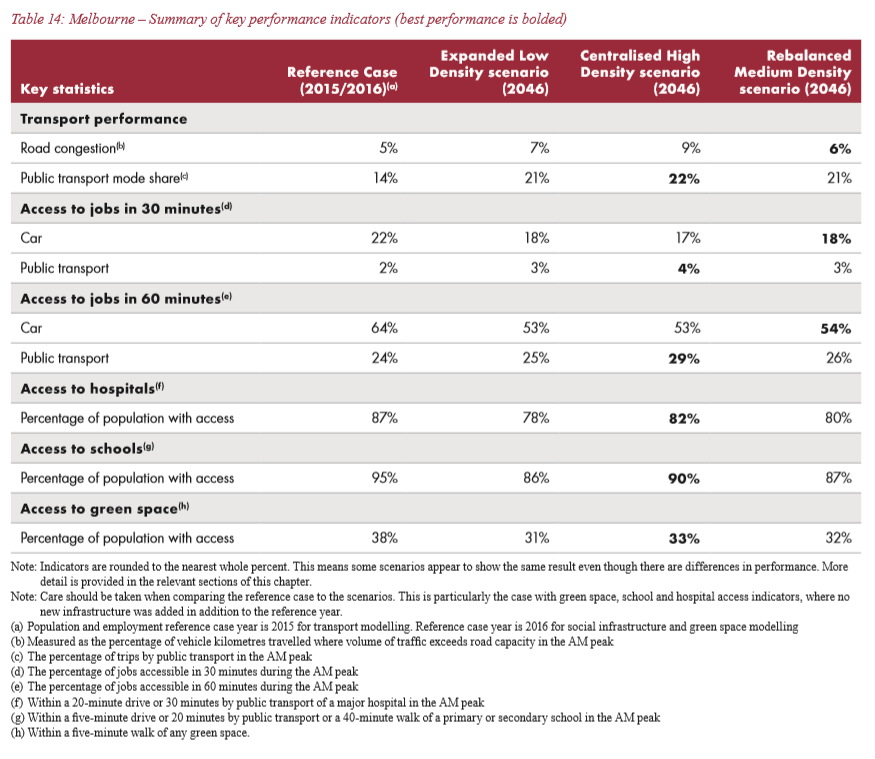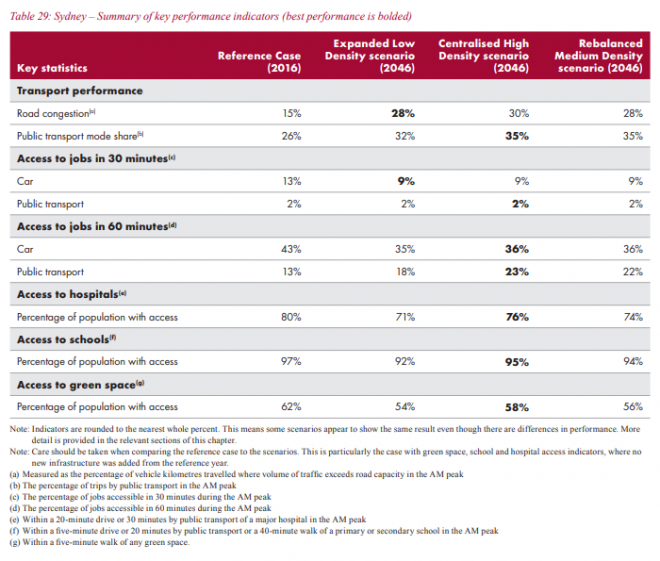When I heard last week that ABC’s Four Corners was going to tackle the population issue tonight, I was pessimistic that it would do the issue justice, given the ABC’s former bias on the topic and the fact that neither Four Corners nor Q&A had sought my input (despite leading the discussion for many years).
Today, the ABC’s Ben Knight published a teaser article on tonight’s report, which has made a decent attempt at covering the issue:
Australia is growing fast. In one year we added nearly 400,000 people to our population. That is like adding a city the size of Canberra.
But, of course, we are not building new cities. Most of those new residents are swelling the populations of our four major cities: Melbourne, Sydney, Brisbane and Perth.
Between 2006 and 2016 Melbourne has added close to 1 million people. Sydney was not far behind adding 800,000.
In the same period, Brisbane and Perth grew by almost half a million.
The pressure points are plain to see — from congestion on the roads and rail networks, to the struggle to keep up with demand for schools and hospitals.
Back in 1997 it was estimated we would take until the middle of this century to reach a population of 25 million.
Australia’s population is there already.
Four Corners has investigated how this population growth has occurred and why it is taking government by surprise.
Australia has a steady birth rate and we’re also living longer.
But the main driver of our population growth is immigration.
On our current rate of growth, Melbourne and Sydney will nudge 8 million in the middle of this century. But they are already groaning under the strain.
It is going to mean big changes. We will all need to make choices, trade-offs, and compromises.
We need more public transport, and fewer cars on the roads
Most of us feel the pressure of population growth during our daily commute to and from work.
Sydney has the longest commute times, followed by Melbourne.
Marg Prendergast is coordinator general at Transport for NSW. She told Four Corners our reliance on cars will have to change.
“We’re doing everything we can to put public transport as a real option, because single car drivers are just not going to fit on the road in years to come,” she says.
“We can’t build ourselves out of this growth. We actually need to manage demand better. We want people to travel earlier (or) to travel a bit later.”
New South Wales is experimenting with getting employers to shift working hours, so that the traffic load can be spread across the day.
But if Melbourne and Sydney are going to become cities on the scale of London and Hong Kong, much bigger changes are needed.
“London and Hong Kong cope because they’ve got amazing public transport systems. Here in Sydney, we’re in catch-up mode.”
We’re going to need a lot more schools
State governments are scrambling to keep up with demand for schools.
In 2016, the Grattan Institute estimated that in more than 10 years Victoria and NSW will need to build around 200 schools each to keep up. Queensland is not far behind, needing an estimated 197 new schools.
Victoria is now building multi-storey “vertical” schools in the inner city to replace those shut down in the 1990s.
Victorian Education Minister James Merlino says this is the future for inner-city suburbs.
“The land lots are smaller, so you need to go vertical to cater for the student numbers.
“We need to accommodate 90,000 additional students over the next five years, just incredible enrolment growth.
“We’ve got 56 new schools in the construction pipeline, 11 of which are opening for the 2018 school year.
“We just need to keep that pace up, year after year, because this pressure is not going to stop.”
We need to think about how fast our population should be growing
Fresh calls for pulling back on immigration are coming from both sides of politics.
In 2000, former New South Wales premier Bob Carr famously declared Sydney was “full”. Close to two decades later, he says we have overshot the mark on immigration.
“Would it be such a national tragedy, if it took us five years to add a million to our population, instead of three? Or, might it, in fact, encourage Australians to find other ways of driving a contemporary economy?” Mr Carr asks.
Former prime minister Tony Abbott recently suggested slashing immigration to allow infrastructure to catch up.
Treasurer Scott Morrison dismissed that immediately, saying “the hit to the budget of that would be about $4 billion to $5 billion over the next four years.”
The Federal Government is cracking down on one aspect of the immigration program: temporary visas. Not only is the list of approved jobs for foreign workers shorter, but it is harder for them to stay on and become permanent residents.
Business is worried. Scott Farqhuar is the co-founder of the Australian tech giant Atlassian. He says about one quarter of his Sydney workforce are here on temporary visas.
“Bringing someone in from overseas actually creates jobs and creates a whole industry versus taking someone else’s job. That idea of one person in, one job gone, is a very much industrial-era way of thinking. It’s not relevant for today,” Mr Farqhuar says.
He says the changes have already made it harder to attract the skilled workers he needs.
“If you’re trying to find someone who’s 45 and they’re a senior person, they’re going to bring their family, their partner, their kids. They want to know that if they like it here then they can stay, they’re not going to have to uproot their family,” he said.
“The government has basically put up a big red balloon internationally saying ‘Australia’s closed for business’.
“People who are interested in moving here now think, okay, I don’t want to move to Australia because the government has sent off this message.”
And … we need someone in charge
By mid-century, Treasury forecasts show our population over the age of 65 will double. Our population over 85 will quadruple.
Bernard Salt of The Demography Group says that will be a major issue to manage.
“Five million baby boomers coming out of the workforce take their tax-paying capacity out. Then they say, ‘Well, thank you very much, I’ll have an age pension. I’ll have pharmaceutical benefits, and anything else that’s going’.”
The question is, will there be enough working-age people to look after them?
And why do we not have a national population policy? Or a population minister?
“I suppose the urban plans we’ve got for Sydney, Melbourne, Brisbane are competent documents,” Bob Carr says.
“They spell out where the high-rise will occur. All I’m saying is we’re going to have to have a whole lot more high-rise to accommodate another 4 million over the next three or four decades.”
Australian Industry Group CEO Innes Willox is more blunt.
“We’ve done an abysmal job,” he says.
“You know, there has been really no serious integrated debate around all the key factors that population growth brings to our economy and our national way of life.”
Watch Big Australia tonight on Four Corners at 8.30pm.
Importantly, Knight’s article concedes the main point on which most ABC and SBS presenters have been in denial: that Australia’s very high levels of immigration are indeed the main cause of its bizarrely rapid population growth, and that such rapid population growth is in fact a huge detriment to our quality of life.
With that one huge point conceded, a sensible debate on population should now be possible in Australia.
Indeed, the Productivity Commission’s 2016 Migrant Intake Australia report estimated that Australia’s population would grow to only 27 million by 2060 with zero net overseas migration (NOM), versus more than 40 million under current immigration settings – a massive difference:

In a similar vein, Sydney’s population would only increase by 210,000 over the next 20-years with zero NOM, versus an increase of more than 1.7 million people under current mass immigration settings:

According to Infrastructure Australia’s latest report, no matter what Melbourne and Sydney do to cope with the migrant influx, public transport’s modal share will barely increase, road congestion will worsen, and access to jobs, schools, hospitals and green space will all deteriorate as Melbourne’s and Sydney’s populations balloon to 7.3 and 7.4 million people respectively by 2046:


So, as long as Australia persists with its mass immigration ‘Big Australia’ policy, residents’ living standards will be eroded. And for what?
And here is the podcast we did over the weekend to help feed into discussion:

